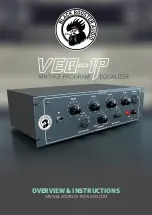
Q. I am having addressing problems. With the 'old' units I was able to run a lead from common to
'0nCPR' and have the unit start playing a track "n" automatically on power up. This does NOT
happen with these units. It seems there is something wrong with addressing operation. Is there any
adjustment I can make ?:
We did indeed make a software change that pre-reads the contact inputs on power-up to prevent automatic
sound activation if contacts where already closed. We had a customer complain about this 'feature'.
To support this un-documented feature, we added an additional CFSOUND.INI file entry of:
[Contacts]
Force=TRUE/FALSE
-->
Setting this value to TRUE restores the original behavior wherein the contact's active status is 'forced'
upon reset, power-up or card-insertion. This will cause associated sound activation if the contact was active.
-->
Setting this value to FALSE (the default) causes the new behavior wherein the contact's current status is
sampled upon reset, power-up or card-insertion. This will cause no associated sound activation until the
contact is re-activated.
Q. Do you have more detailed spec's on your amplifier module ?:
The stereo amplifier is based upon Analog Devices SSM3302 Class D Amplifier and provides 10W per
channel to bridge tied speakers (no ground reference).
Q. How do I use the Windows Sound Recorder to make recordings ?:
1. Click on the Start Button, then Programs, then Accessories, then Entertainment, then Sound Recorder.
2. Click on Files, then Properties. A new window opens named "Properties For Sound".
3. Change the "Format Conversions" "Choose From" drop down box to "All Formats" or "Recording
Formats".
4. Next, click on "Convert Now", a new window named "Sound Selection" opens.
5. Make sure "Format" is PCM, 44.1KHz, Stereo or Mono.
7. Click on the OK Button to close the "Sound Selection" window.
8. Click on the OK Button to close the "Properties For Sound" window.
9. To start recording, click on the button with the red dot(record).
10. To stop recording, click on the button with the black square(Stop).
11. Once you have finished recording, Click on File, then Save As, and name your file how you want it to
play.
12. I.E. "01B.WAV" to play when there is no switch closures.
13. I.E. "01C.WAV" to play when input #1 closes.
14. Copy the file to the Compact Flash Card.
You're done.
NOTE: If you click on File, then click new, you will have to set the File properties again before recording.
Please see the videos on the
SUPPORT
page of the
CFSOUND.COM
website.
Q. Can a output contact be used to operate a lamp to indicate that the message has been triggered ?:
If you need individual lights that illuminate when the associated input is active, you would need the Contact
I/O 8 module in the CFSound-IV. If you only need a single light that is illuminated whenever any sound is
playing then you can use the PTT relay that is installed on the main unit and use a Contact Sense 8 or Contact
Sense 24 module.
Q. We have a client who has a specific need -- an interval timer function. They want their very short
message to go off every 30 minutes (not seconds). Does your equipment have a provision for an interval
timer ?:
By placing a file named CFSOUND.INI on the compact flash card along with your sound files, you can
control several operating features of the unit.
For your application the following entry would provide the 30 minute delay between the background sound:










































